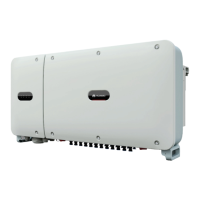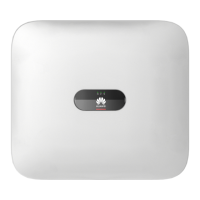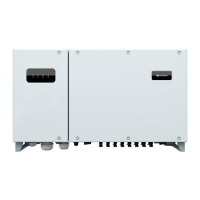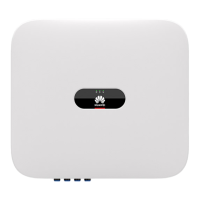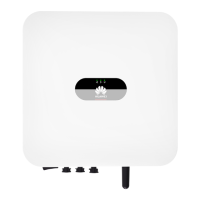Outdoor cable and M10 OT/DT
terminal
Tracking system
power cable
-core outdoor copper cable with
AC output
power cable
(multi
If you connect a ground cable to the
ground point on the device enclosure
and the neutral wire is not used, you
are advised to use a three-core (L1,
L2, and L3) outdoor cable and M12
OT/DT terminals (L1, L2, and L3).
If you connect a ground cable to the
ground point in the maintenance
compartment and the neutral wire is
not used, you are advised to use a
four-
core (L1, L2, L3, and PE) outdoor
cable, M12 OT/DT terminals (L1, L2,
and L3), and M10 OT/DT terminals
(PE).
If you connect a ground cable to the
ground point on the device
and the neutral wire is used, you are
advised to use a four-
core (L1, L2, L3,
and N) outdoor cable and M12 OT/DT
terminals (L1, L2, L3, and N).
If you connect a ground cable to the
ground point in the maintenance
compartment and the neutral wire is
used, you are advised to use a five-
core (L1, L2, L3, N, and PE) outdoor
cable, M12 OT/DT terminals (L1, L2,
L3, and N), and M10 OT/DT terminals
Copper cable
− S: 70–240 mm
cable or copper-
clad aluminum
cable:
− S: 95–240 mm
AC output
power cable
(single
You are advised to use a single
outdoor cable and M12 OT/DT
terminals.
Copper cable
− S: 70–240 mm
cable or copper-
clad aluminum
cable:
− S: 95–240 mm
–32 mm
Cable Description
Preparations
4.1
•
S and S
p
are the conductor cross-sectional areas of AC power cables and PE cables respectively.
•
The cable size must comply with local cable standards.
•
The factors that affect cable selection include the rated current, cable type, routing mode,
ambient temperature, and maximum expected line loss.
•
Connect cables in accordance with the local installation laws and regulations.
•
To prevent poor cable connection due to overstress, leave enough slack before connecting the
cables to the appropriate ports.
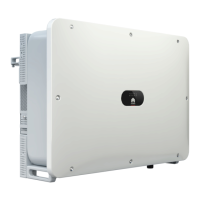
